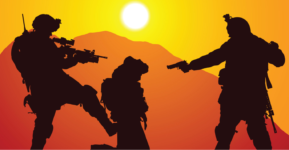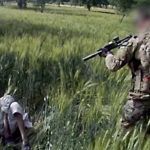The Brereton Report’s Detailing of Historical Australian War Crimes: Part 2

The recently released Brereton report into alleged SAS war atrocities perpetrated in Afghanistan provides an account of historical Australian war crimes committed in six different conflicts.
In our first article relating to the history, we provided a rundown on the Boer War, the Boxer Rebellion and the First World War. In this one, we get stuck into the rest.
The Second World War
International humanitarian law (IHL), or the laws of armed conflict, are the rules governing war, which most nations are a party to. They outline what troops are permitted to do, as well as what constitutes a war crime.
As Australian troops entered the Second World War in the late 1930s, it was British domestic laws that applied when prosecuting any serious breach of the conflict laws.
The Brereton report details two groups of war crimes allegedly committed by Australian soldiers during the “bloodiest war in history”. And like those of previous conflicts, these crimes mainly involved the treatment of captured or incapacitated soldiers.
The 1943 Battle of Bismarck saw Allied air forces sink twelve Japanese ships, killing 3,000 troops.
This left a large number of survivors clinging to debris, floating on rafts or attempting to swim to land. And for the next couple of days, Allied troops combed the region picking them off. Many of the air force personnel related being sickened by having to exterminate the survivors.
And while technically in breach of a 1907 Hague Convention, this operation, which was approved at the highest level, was later found to be “harsh but necessary”.
The report also notes persistent allegations of Australian troops executing Japanese prisoners of war and those lying wounded in battle.
These killings were understood to have occurred and were recognised as war crimes at the higher ranks of Australian defence, but the perpetrators were never prosecuted.
The Vietnam War
Australian involvement in Vietnam lasted from 1962 to 1972. It was the nation’s longest engagement in a particular conflict prior to the war in Afghanistan.
By 1962, UK military disciplinary codes had been incorporated into local defence law, which ended up meaning that the 1881 British code applied to Australians until the 1980s.
In terms of IHL, the four Geneva Conventions, making up the majority of the current laws of armed conflict, had been established by Vietnam.
Brereton outlines that the allegations of war crimes perpetrated by Australian troops in Vietnam are widespread, and 50 years on, they remain unsubstantiated and are unlikely to ever be investigated.
Both Vietnamese and Australian historians have set out that our troops were involved in “savage beatings, rapes, arbitrary arrests, beheadings”, the murder of villagers, the torture and killing of wounded soldiers and the mutilation of corpses.
The report details that Vietnam was the first time that Australians are alleged to have been using “throwdowns”, which are foreign weapons and equipment that can be placed on the body of a “deliberate unlawful killing” to give the impression they were armed at the time of death.
The use of throwdowns was found by the Brereton inquiry to be a regular practice by Australian special forces in Afghanistan and the suspicion that they were being used was perhaps known by officers at the level of squadron commander.
The First Gulf War
Covering 1990 to 1991, the Iraqi war saw 1,800 Australian Defence Force personnel deployed to the Gulf to help enforce UN sanctions against Iraq over its invasion of Kuwait, and subsequently push the Iraqi forces out of its neighbouring country.
Australia was a party to the Geneva Conventions and its accompanying protocols, and the disciplinary laws and offences that applied domestically to IHL were now Australian drafted and enacted within local legislation.
The Brereton report sets out that while there were allegations of Iraqi war crimes, Australia was not involved in their prosecution. And in terms of war crimes perpetrated by Australian soldiers there are no reports or allegations.
No one knew
The Brereton investigation concludes its chapter on Australian war crimes of the past noting some “key themes of relevance” that emerged out of its analysis of the historical record.
The indications from the Boer War through to Vietnam are that some Australian troops have, while others may have, killed persons under their control. And there have been disconnects between “formal orders and policy, and local unit practices”.
The Vietnam War shows that there was “an expansive approach “to the identification of targetable individuals and the indicia of targetable conduct”.
While overall, there are suggestions that troops have been concealing their crimes. The report maintains that from the 1918 Surafend incident in Palestine, there are indications “of the ability of a closely-bonded unit to maintain a code of silence and rebuff attempts to obtain evidence”.
This last idea feeds into a broader theme throughout the Brereton report, which is that no one above the level of patrol commander was aware that war crimes were taking place on the ground in Afghanistan.
However, many commentators simply aren’t buying this.







